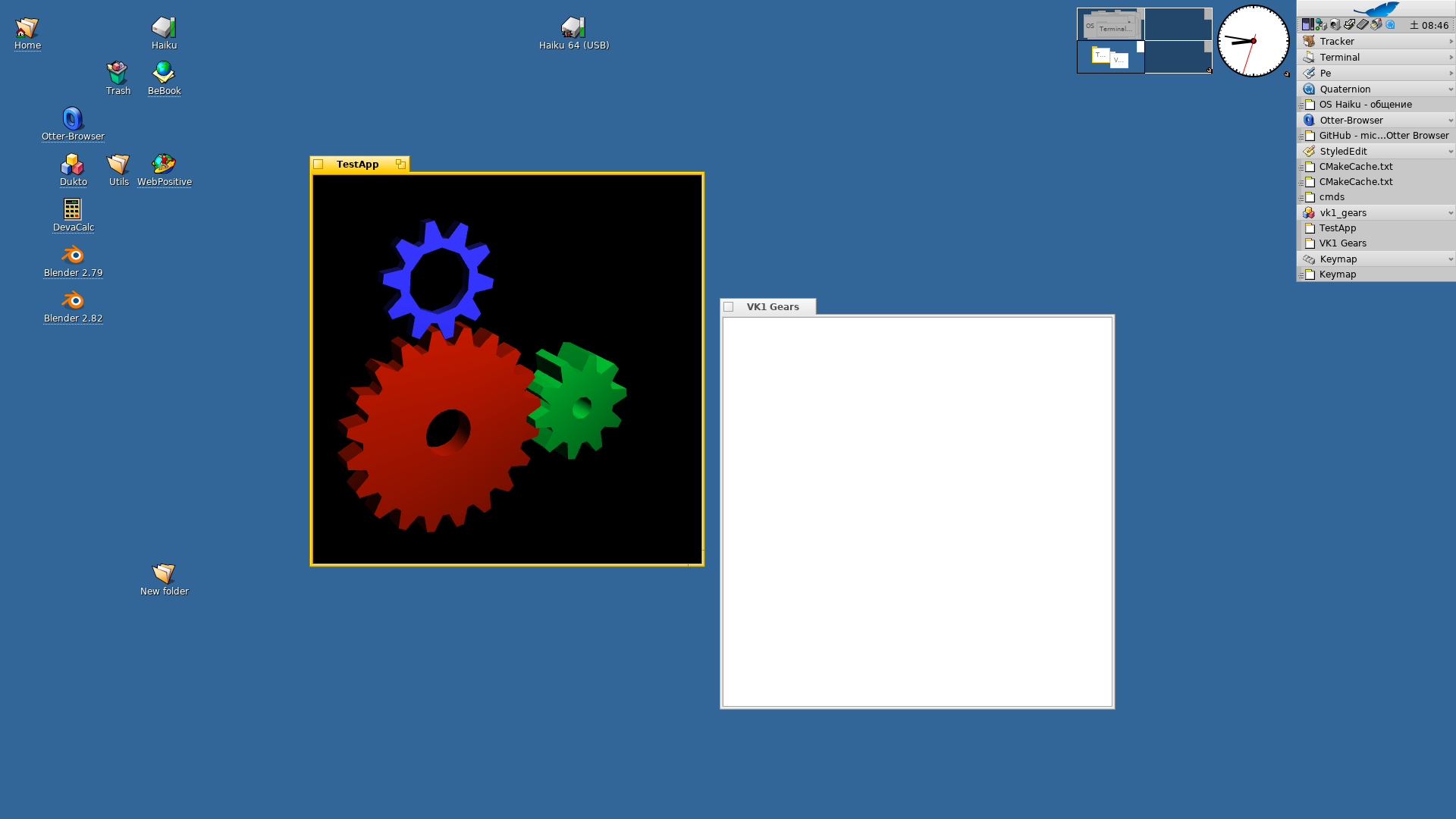With some hacks Vulkan is working with GLFW and vkgears example. WSI add-on currently creates its own window instead of using GLFW window, so 2 windows are created. Proper support need adding Haiku Vulkan WSI surface extension.

With some hacks Vulkan is working with GLFW and vkgears example. WSI add-on currently creates its own window instead of using GLFW window, so 2 windows are created. Proper support need adding Haiku Vulkan WSI surface extension.
